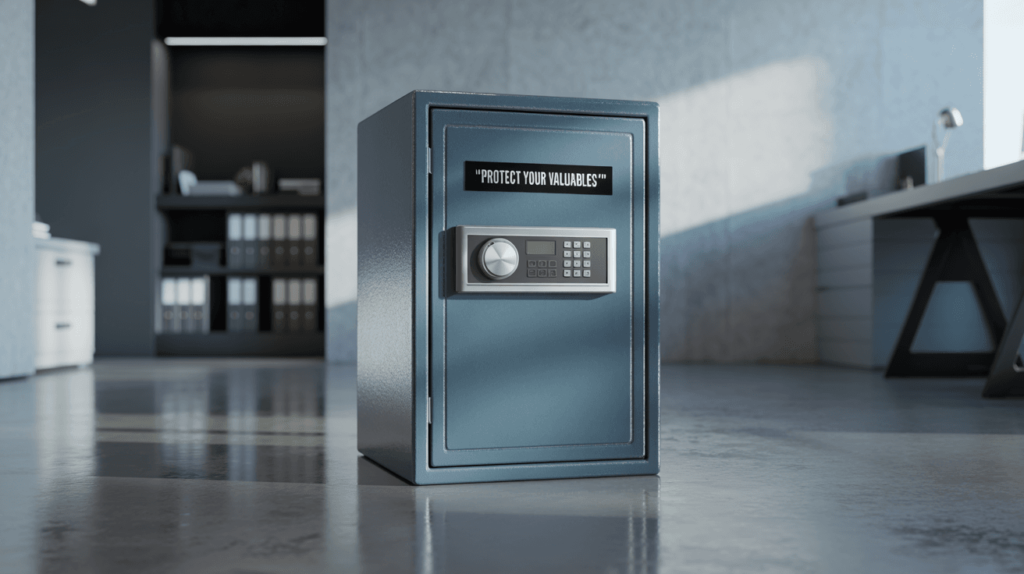Introduction
Heavy-Duty 1-Hour Fire Safes with Digital or Key Lock offer robust protection for your most important documents and valuables. These safes combine certified fire resistance with flexible access options, ensuring peace of mind in homes or businesses.

1. Overview of Heavy-Duty 1-Hour Fire Safes
● Purpose and typical applications
● Core features and benefits
● Comparison to standard security safes
● Ideal user profiles
| Feature | Description | Typical Rating |
|---|---|---|
| Fire Resistance | Holds internal temp ≤350°F for 60 min | UL 72 Class 350 |
| Lock Options | Digital keypad or mechanical key lock | N/A |
| Body Construction | 12–14 gauge steel with composite core | 1 hour |
| Interior Volume | 0.5–2.0 cubic feet | Varies by model |
2. Fire Resistance and Testing Standards
● UL 72 Class 350 vs Class 150
● EN 1047-1 European fire tests
● Temperature and duration criteria
● Importance of certification labels
3. Digital vs Key Lock Mechanisms
● Benefits of digital keypads (PIN change, audit logs)
● Advantages of mechanical key locks (no batteries)
● Hybrid systems combining both
● Override options and emergency access
4. Construction Materials and Design
● Steel gauge and composite insulation layers
● Door seal technology (intumescent gaskets)
● Anti-pry features and relocking bolts
● Exterior finishes and corrosion resistance
| Component | Budget Model | Premium Model |
|---|---|---|
| Steel Gauge | 14-gauge | 12-gauge |
| Insulation Core | Gypsum-based | Perlite-gypsum composite |
| Door Seal | Basic rubber gasket | Intumescent expanding gasket |
| Relock Mechanisms | Single relocker | Dual relockers & anti-drill |
5. Size and Capacity Options
● Small safes for documents and jewelry
● Medium models for cash and media
● Large safes for bulk storage
● Modular shelving and removable trays
6. Installation and Anchoring
● Floor-mount vs wall-mount choices
● Anchoring hardware and torque specs
● Site selection (temperature, humidity)
● Professional installation vs DIY
7. Interior Organization and Accessories
● Adjustable shelves and trays
● Door pockets for small items
● Lighting and moisture-control packs
● Custom foam inserts
| Accessory | Purpose | Availability |
|---|---|---|
| Adjustable Shelf | Versatile storage | Standard on mid-range models |
| Removable Tray | Easy transport | Optional on premium models |
| Door Pocket | Quick-access items | Standard on large models |
| Desiccant Pack | Humidity control | User-replaceable |
8. Power and Battery Backup for Digital Locks
● Battery types and expected life
● Low-battery warning systems
● External power ports (9V backup)
● Best practices for battery replacement
9. Security Features Beyond Fire Protection
● Anti-drill plates around lock area
● Anti-pry bars and reinforced hinges
● Relocker devices triggered by attack
● Integration with alarm systems
10. Certification and Compliance Requirements
● UL, ETL, and EN certifications
● ISO 834 furnace curve references
● Local building and insurance mandates
● Label interpretation and verification
| Certification | Scope | Benefits |
|---|---|---|
| UL 72 | Fire resistance | Insurance approval |
| EN 1047-1 | European fire and water | International standards |
| ETL | Safety and performance | Factory quality assurance |
| ISO 834 | Furnace test curve | Extended compliance |
11. Maintenance and Inspection Procedures
● Biannual fire seal checks
● Quarterly lock and bolt maintenance
● Annual battery and electronic test
● Record-keeping and logbooks
12. Environmental Considerations
● Operating temperature ranges
● Humidity and condensation avoidance
● Corrosion-resistant finishes
● Eco-friendly disposal of materials
13. Brands and Model Comparisons
● Leading manufacturers overview
● Entry-level vs commercial models
● Warranty and support offerings
● Value-for-money analysis
| Brand | Model Tier | Key Differentiator |
|---|---|---|
| Brand A | Entry-Level | Affordable basic protection |
| Brand B | Mid-Range | Enhanced locks and shelves |
| Brand C | Premium | Superior insulation and security |
| Brand D | Commercial-Grade | High capacity and audit features |
14. Pricing and Total Cost of Ownership
● Initial purchase price ranges
● Installation and anchoring costs
● Maintenance and parts replacement
● Depreciation and resale values
15. Choosing the Right Safe for Your Needs
● Match capacity to your asset volume
● Select lock type based on user access
● Balance fire rating with budget
● Plan for future expansion or relocation
FAQ
Q1: What does “1-hour fire safe” mean?
It means the safe’s interior stays below a critical temperature (usually 350°F) for at least 60 minutes under standardized fire tests.
Q2: How do I verify a safe’s certification?
Check the manufacturer’s certification plate for UL, EN, or ETL marks and request the official test report if needed.
Q3: Which lock type is more reliable long-term?
Mechanical key locks require no power and are less prone to electronic failure, but digital locks offer changeable codes and audit logs.
Q4: Can I install a heavy-duty fire safe myself?
DIY installation is possible with proper tools and anchors, but professional installation ensures correct anchoring and warranty compliance.
Q5: How often should I replace the batteries in a digital lock?
Replace batteries every 6–12 months or immediately when the low-battery warning activates to avoid lockout risks.



